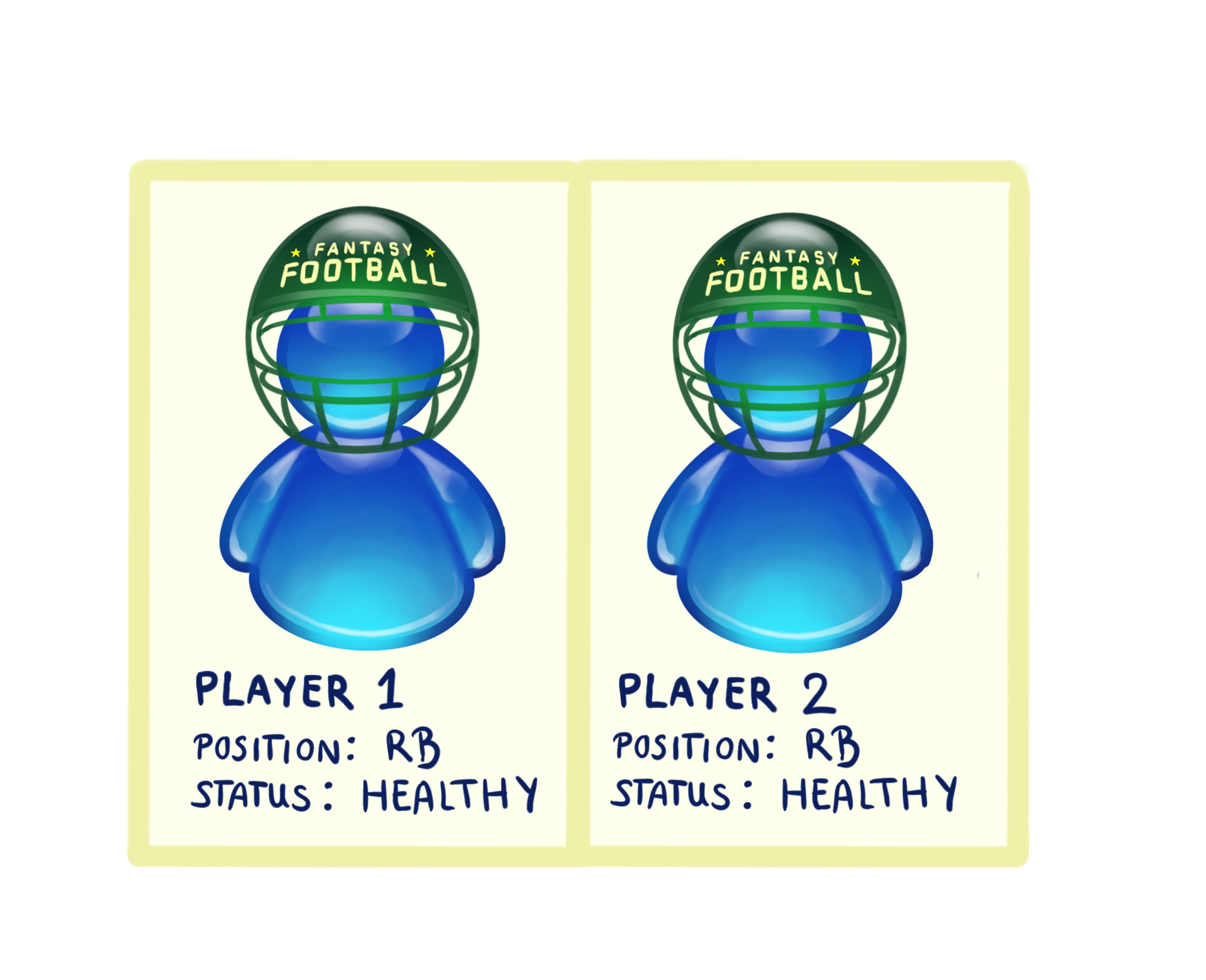On her fantasy football draft day, chemistry teacher Aparna Sankararaman’s desk is cluttered with a laptop filled with National Football League depth charts on the screen and her fantasy football app ready on her phone.
The clock ticks down for her turn as she waits for the other science department members to make their picks. She reminds herself of her winning strategy: pick a player who is most likely going to be a starter or who is on a team that has no other talent. Apparently this calculated strategy paid off, leading her to victory in this year’s science department fantasy football championship.
Fantasy football, a virtual game where players create teams by drafting real-life NFL players from different teams, allows players to gain points based on how well those players perform in actual games. Participants then compete against other league members weekly, with the higher scoring team winning. Participants often play in a league with friends.
Sankararaman said she initially decided to join her league at Paly because she was asked by other science department members if she was interested in joining the Math department vs. Science department league.
“Apparently they had an opening in the science department, and the instructional lead at the time heard that I was a big fan of college football,” Sankararaman said. “I decided to join the league, even though I knew nothing about the NFL or fantasy football because I figured this would be a way to get to know other teachers at Paly.”
Senior and football captain Joseph Kessler said he decided to join a league because of his past experiences with fantasy baseball.
“I got into fantasy football because my friends invited me to join a league last year because they needed some people,” Kessler said. “I had played fantasy baseball before and wanted to give football a try.”
Tradition may also be a reason for leagues. Senior cross country runner Stefan Sochacki, for example, said the varsity cross country team holds a fantasy football league.
“I think the best part is the competitive nature amongst your friends,” Sochachki said. “Fantasy football really made our group closer. We would talk to each other and hang out and argue with each other a lot more.”
Sankararaman said fantasy football can even help foster connections between teachers and students.
“I have asked students for advice in the past about my lineups and whom to pick off the waiver wire,” Sankararaman said. “I think it is important for students to see different dimensions of their teachers past the subject that they teach.”
Kessler said his draft strategy relies on advice from experts who provide the projected score of players, but he also favors certain types of players.
“Experts know more than I do, so I’ll listen to them,” Kessler said. “I like guys who are tough and will play through injuries, and guys who are going to produce every week.”
Despite his determined research, Kessler said bye weeks — designated weeks throughout the middle of the season in which teams do not play a game — are the most difficult part of advancing in his league.
“Having two of your best players on bye at the same time is very frustrating,” Kessler said. “It’s hard to make up for all those lost points in must win matchups.”
For Sankararaman, the most challenging aspect of fantasy football is losing a matchup, especially when the loss was due to a reason out of her control.
“I can use historical data, projected stats and a ton of research to determine who my starters are going to be, and none of that will matter if a player gets injured in the first quarter,” Sankararaman said. “Fantasy football gives this false sense of control, but ultimately luck is a huge factor. When I lose, I tend to forget that and feel like I did something wrong in my research.”
Many leagues incentivize winning by assigning a punishment for last place. Sochacki said their league’s annual fantasy football punishment has been a tornado short mile.
“Each lap, we get to blend up whatever ingredients we want, and then the loser takes a shot of whatever you choose,” Sochacki said. “It was really funny for us, but for them it was really bad.”
Sharing a similar punishment, Kessler said his league requires the last place finisher to run a milk mile.
“You have to drink a gallon of milk and run a mile within the time limit. If you don’t make the time you have to repeat,” Kessler said.
However, Sankararaman said their league does not enforce a punishment.
“We keep track of department versus department matchups during the regular season, and the department that loses has to host the department that wins for a superbowl party in February,” Sankararaman said.
As the winner of his fantasy football league, Kessler said his advice is to draft a premier tight end and pick a new defense every week based on favorable matchups.
Despite all the strategy and statistics involved, Sankararaman said her favorite part about participating in a fantasy football league is the social and competitive aspect.
“We’ll complain about our teams to each other, talk about the games and occasionally, give each other advice,” Sankararaman said. “It’s a feeling of we’re in this together, but at the same time competing against each other. Join a league where you like the people and just have fun during the season. Don’t take the losses too personally and don’t gloat too much over the wins.”
A Fever For Fantasy
Football leagues builds connection among students, teachers
February 17, 2025

Story continues below advertisement
Donate to The Campanile
$250
$1000
Contributed
Our Goal
Your donation will support the student journalists of Palo Alto High School's newspaper

